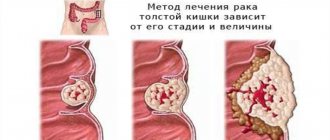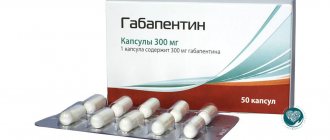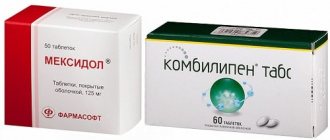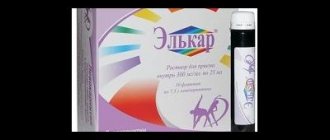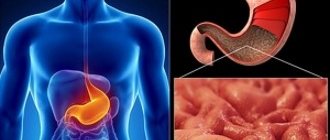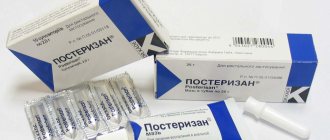VSD is a disease that develops in the presence of genetic and acquired factors leading to disruption of the neurohumoral and endocrine regulation of the tone of the autonomic nervous system. The clinical picture of vegetative-vascular dystonia is characterized by a variety of symptoms and depends on age, gender and the severity of autonomic dysfunction.
At the Yusupov Hospital, for the treatment of patients suffering from VSD, medications are used that have a pronounced therapeutic effect and do not have significant side effects. Patients respond well to the treatment methods used by neurologists, cardiologists, and rehabilitation specialists.
There is no single drug that can be used to cure vegetative-vascular dystonia. Complex drug therapy for VSD includes etiological, pathogenetic and symptomatic treatment. Nootropic drugs (phenibut, fezam, piracetam) for VSD improve the nutrition of brain cells, regulate the processes of excitation and inhibition of the central nervous system, reduce psychological stress and anxiety levels. Trental for VSD dilates the coronary vessels, reduces pain and discomfort in the heart area. Vitamin-mineral complexes (neuromultivitis) are an integral component of VSD therapy.
Release form, manufacturer
Mildronate is a Latvian medicine produced by JSC Grindeks containing meldonium as the main substance.
Mexidol is a domestic drug that is produced by several enterprises at once: Pharmasoft, ZiO-Zdorovye CJSC, ALSI Pharma CJSC based on ethylmethylhydroxypyridine succinate.
Mildronate is produced in capsules, syrup for oral use and as a solution for intramuscular, intravenous and parabulbar injections.
Mexidol is produced in tablet form, as well as in the form of a solution for intravenous and intramuscular administration.
Pharmadynamics and therapeutic effects
There is an opinion that Mexidol and Mildronate have the same effect, however, it is not entirely true. Despite the fact that the drugs have many of the same effects, the difference between them is quite significant.
The presence of the active ingredient in Mildronate, meldonium, gives the drug the following effects:
- Angioprotective. Suppresses the production of inflammatory mediators. Normalizes the permeability of the walls of blood vessels, increasing their tone. Helps improve blood microcirculation.
- Angianal. Helps eliminate coronary insufficiency and actively fights angina attacks. Thanks to the drug, oxygen delivery to the heart muscle increases.
- Antihypoxic. Increases the tolerance of the body as a whole or its individual tissues to a lack of oxygen caused by various reasons.
- Cardioprotective. Corrects and restores myocardial activity.
Mildronate promotes:
- improving cellular metabolism;
- normalization of blood microcirculation by eliminating vasoconstriction;
- slowing down the process of necrosis;
- reducing the period of recovery of the body after surgical interventions or illnesses;
- improving myocardial contractility;
- increasing the body's resistance to physical and mental stress;
- increasing immunity at the cellular level;
- elimination of some eye diseases.
Mexidol has the following effects:
- Antioxidant. Neutralization of free radicals leads to increased immunity, normalization of the functional abilities of all organs, prevention of aging, etc.
- Membrane stabilizing. Helps restore and increase the stability of cell membranes, their structure and properties.
- 3Antihypoxic. Participates in supplying cells with oxygen when it is lacking.
- Nootropic. Normalizes nutrition and blood circulation in the brain. This effect improves higher mental properties (memory, perception, speech, thinking). In addition, the drug protects the gray matter of the brain from overload and oxygen deficiency.
- Anticonvulsant. Eliminates and prevents the appearance of involuntary muscle contractions.
- Anxiolytic. Helps cope with feelings of anxiety, restlessness, and normalize the emotional background.
Mexidol also reduces the toxicity of antifungal agents and antibiotics when used.
The use of Mexidol leads to:
- to increase the level of dopamine in the brain, normalize metabolism in the organ and improve cerebral blood supply;
- improving blood microcirculation, its rheological parameters and reducing red blood cell aggregation;
- reduction of low-density lipoprotein levels;
- stabilization of cell membranes;
- normalization of metabolism and blood flow in ischemic areas of the heart muscle;
- reducing the area affected by necrosis;
- restoration and improvement of cardiac electrical activity and organ contractility;
- restoration of higher mental properties of the brain;
- improving the mental state after suffering stressful conditions;
- elimination of manifestations of intoxication (neurological and neurotoxic) after prolonged consumption of alcoholic beverages.
Both drugs are used not only to eliminate unpleasant symptoms, but also during sports to increase the body's endurance and recovery after sports competitions.
Drugs that improve cerebral circulation in VSD
Doctors at the Yusupov Hospital use drugs that improve cerebral circulation in the complex treatment of VSD. The composition of the drug Vasobral includes alpha-dihydroergocriptine, a dehydrogenated derivative of ergot. This substance blocks α1- and α2-adrenergic receptors of vascular smooth muscle cells. The drug improves cerebral circulation in VSD.
Nicergoline improves metabolic and hemodynamic processes in the brain. The drug reduces platelet aggregation and improves the physicochemical properties of blood. When using the drug, the permeability of the vascular wall decreases, blood circulation and metabolism in the brain improve, and the resistance of brain tissue to hypoxia increases. Caffeine, which is part of the drug, stimulates the central nervous system. In patients suffering from VSD, mental and physical performance increases and the feeling of fatigue decreases.
Vinpocetine for VSD improves cerebral circulation and metabolism in brain neurons. The drug increases the resistance of neurons to hypoxia and helps increase oxygen delivery to red blood cells. Vinpocetine increases cerebral blood flow, reduces cerebral vascular resistance without significantly changing systemic circulatory parameters (blood pressure, minute volume, heart rate).
Picamilon has an effective nootropic effect for VSD. Reviews about the drug are good. In case of VSD, the drug dilates the blood vessels of the brain, has a tranquilizing, psychostimulating and antioxidant effect. Picamilon improves the functional state of the brain and affects cerebral circulation by normalizing tissue metabolism and improving microcirculation.
When taken as a course by patients suffering from VSD, the drug has the following effects:
- increases physical and mental performance;
- reduces headaches;
- normalizes sleep;
- improves memory;
- helps reduce or eliminate tension, fear, and anxiety.
Indications
Mildronate and Mexidol have many of the same indications, but there are still differences.
Monotherapy with Mexidol is less effective than its use as part of complex treatment
Mexidol is recommended:
- for disorders of blood circulation in the brain;
- traumatic brain injuries;
- vegetative-vascular dystonia;
- causeless anxiety and restlessness, accompanied by neurotic and neurosis-like conditions;
- acute heart attack;
- primary open-angle glaucoma;
- post-alcohol syndrome;
- symptoms of poisoning of the body with antipsychotic drugs;
- necrotic pancreatitis, perinonitis and other purulent-inflammatory processes in the abdominal cavity;
- ischemic disease;
- non-inflammatory brain diseases;
- ischemic disease;
- convulsive attacks, etc.
Taking Mildronate is recommended to eliminate:
- manifestations of ischemia;
- pathological changes in peripheral arteries;
- decreased performance;
- dyscirculatory encephalopathy;
- symptoms of physical overexertion (also when playing sports);
- chronic heart failure;
- pain syndrome on the left side of the chest associated with dishormonal myocardiopathy;
- bronchial asthma;
- strokes;
- consequences of excessive drinking;
- chronic obstructive pulmonary disease;
- excessive irritability and psychological crises (fears, panic, anxiety).
Mildronate is also relevant in ophthalmology for the treatment of thrombosis, various types of retinopathy and hemorrhages.
Reviews from doctors and patients
Oksana, 49 years old, Simferopol. The doctor prescribed me to take Mexidol for vegetative-vascular dystonia. I drank it for 10 days, no result. After consulting a doctor, it was determined that the effect could occur in a couple of months. The drug did not suit me.
Irina, 60 years old, Khabarovsk. It all started with frequent pain in the chest area. During the examination, a rapid heartbeat was discovered and a course of treatment with Mildronate was prescribed. The drug is strong, acts quickly, and I have not experienced any side effects. My condition returned to normal within a week. The pain went away, I became more active.
Boris, neurologist. When used together, these two drugs are very effective. For pathologies of the brain, Mexidol would be preferable; for diseases of the heart muscle caused by circulatory disorders, Mildronate would be preferable.
Maria, cardiologist. Mildronate and Mexidol are completely different drugs, they have a similar effect on the body, but there are not all differences. Yes, they have the same active ingredient, but the mechanism of influence on the body is radically different.
Contraindications and unwanted effects
Instructions for use of drugs also contain differences in the list of their contraindications and side effects.
Both drugs are not used if you are hypersensitive to their ingredients. In addition, Mildronate is contraindicated in case of intracranial hypertension, and the use of Mexidol is prohibited in case of acute liver and kidney failure.
Medicines are generally well tolerated by patients, side effects are observed in rare cases
Taking Mildronate in some cases can lead to:
- to allergic reactions (redness and rashes on the skin, swelling, etc.);
- dyspeptic symptoms in the form of belching, nausea, vomiting, heartburn;
- increase in heart rate;
- increased arousal;
- hypotension.
The use of Mexidol is fraught with:
- allergies;
- drowsiness, weakness, lethargy;
- nausea, flatulence and other dyspeptic disorders.
Negative manifestations do not appear to be life-threatening and disappear as you stop taking the medication.
Comparison of drugs: similarities, what's the difference
The above drugs exhibit similar properties, so during therapy the same result is ensured. Mexidol and Mildronate are produced in similar dosage forms; the active ingredient is meldonium; they are prescribed for use during pregnancy, lactation, and for children. Mildronate is produced by a Latvian company, the contraindication for use is intracranial hypertension. This drug has an increased likelihood of side effects, namely:
- skin rashes;
- nausea, vomiting;
- pain in the stomach;
- lowering blood pressure;
- emotional excitement.
Mexidol is produced by several pharmacological enterprises in Russia and is contraindicated in patients with acute kidney and liver diseases. It is easier to tolerate by the body, side effects are easier and less frequent. For example:
- lethargy, drowsiness;
- nausea, bloating;
- dizziness.
Compatibility of Mexidol and Mildronate
Although the drugs have similar effects, their interaction enhances the therapeutic effect of the treatment.
Specialists can combine drugs:
- for brain pathologies;
- ischemic stroke (together with Actovegin);
- cerebral ischemia, as well as vestibulo-atactic syndrome (appearance of spots before the eyes, nausea, dizziness, etc.);
- abnormal heart rhythm;
- non-inflammatory damage to the heart muscle;
- withdrawal syndrome.
As part of complex treatment, it is possible to use various forms of drugs
It is impossible to give an exact answer: which is better, Mildronate or Mexidol. Each drug is designed to get rid of certain diseases and the advisability of their use depends on the choice of the doctor.
Which is better - Mexidol or Mildronate
A clear answer to the question: “Which is better?” No. This is due to their different mode of action. Mexidol is more effective for cerebral circulatory disorders and heart problems due to increased emotional and psychological stress.
Mildronate is preferred by patients to improve performance during increased physical activity. The product has:
- strong tonic effect;
- the ability to enhance oxygen access to muscle tissues and internal organs;
- preventive action against oxygen starvation of the heart due to increased physical activity.
Reviews
Elena, 34 years old, Kyiv My father has a strong craving for alcohol. He usually drinks for about two weeks, and it’s hard to break out of the binge. His heart begins to ache, his hands shake, convulsions appear, feelings of anxiety, fear, a depressive state gives way to aggression, and sleep is disturbed. Encodings don't help. It becomes scary for his health. The narcologist advised me to take Mexidol at the same time as Mildronate. A few days of treatment with these drugs allows dad to return to normal, he begins to feel well, and his behavior becomes adequate.
Igor, 44 years old, Moscow, university teacher Lately he has become very unbalanced. At work I lashed out at students and colleagues, my wife and children constantly irritated me, and I developed a feeling of fear. Because of his character, he was constantly in conflict with someone. Friends advised me to drink Mildronate. I started taking one capsule in the morning and evening. It was possible to fall asleep only in the morning, almost before getting up. The condition only worsened. I had to see a doctor. As it turned out, Mildronate should not be taken immediately before bedtime. The specialist advised me to undergo a course of treatment with Mexidol. The drug really helped me. Now the neurotic manifestations have disappeared. Thanks Mexidol.
Irina Vasilievna, 60 years old, pensioner Several years ago I began to feel unpleasant symptoms: strong heartbeat, alternating with interruptions, shortness of breath, chest pain on the left side. The doctor diagnosed coronary heart disease and prescribed Mildronate. The medicine is quite expensive, but completely worth it. Not only has my health improved markedly, but my performance has also increased. Now I work in the garden with my children and feel almost no fatigue.
